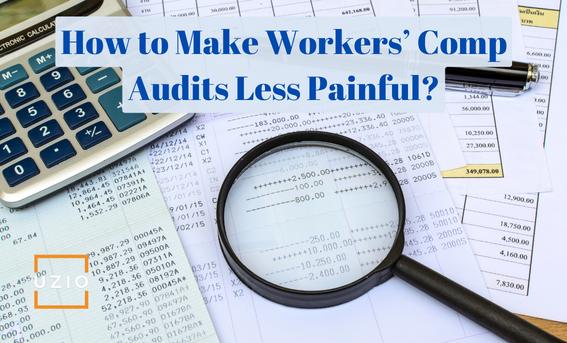Introduction
Chances are you dread those couple of weeks every year when you are undergoing workers’ comp audit. Because most states mandate this audit, you can not avoid it. In this article we will share the steps you can take to make workers’ comp audit less painful.
What is a Workers’ Comp Audit?
Before we answer this question, let us understand why you purchase workers’ comp insurance. Workers’ compensation insurance provides medical and wage benefits to employees who are injured or become ill at work. The coverage is mandated by each state. Workers’ comp is considered a social insurance because it relies on a social contract between management and employees, where in exchange for purchasing workers’ compensation insurance, business owners are protected from civil suits from their workers who are injured on the job.
The workers’ compensation insurance is provided by insurance companies in most states. In some states it is underwritten by the state. When you purchase a workers’ comp insurance policy, the premium payment is estimated based on:
- Employee wages including bonuses and tips
- Employee class codes: These are three or four digit numbers insurers use to determine the risks of each job
- Experience modifier: Modification of the class rates based on the loss history of an individual business
To check that the estimates are right, your insurance company requests a workers’ comp audit. The audit verifies that the premiums paid for the workers’ comp insurance are accurate. The auditor generally evaluates the accuracy of the risks, class code, experience modifier and payroll.
When Should You Expect a Workers’ Comp Audit?
Once your workers’ comp policy expires, the insurance provider will notify you of an audit within 60 days. In many cases, you may receive an email directly from the auditor assigned by the insurance company.
How To Prepare for Workers Comp Audit?
Normally when the auditor reaches out to you to inform you about the audit, s/he will also tell you what is needed for the audit. Most of the needed information comes out of your payroll system. Your payroll vendor should have a section dedicated to reports needed for workers’ comp audit. Mostly you should be able to get what you need from these reports. Sometimes the auditors may ask for data not available through canned reports. If that is the case, you should ask your payroll provider to create a custom report that gives you the data you need. Please be aware that your payroll provider may ask for additional time to create the custom report and may even charge you for it.
What Can You Do To Avoid the Pain?
In order to avoid the pain associated with a workers’ comp audit, you can take the following measures:
Classify employees correctly
Because class codes are used to estimate the premium, you can reduce a lot of pain during the audit, if you classify all your workers correctly right out of the gate. Most states use the codes provided by the National Council on Compensation Insurance (NCCI). If you are looking for a particular code, you can look-up here.
Accurate Payroll Estimate
Apart from the class codes, another important factor in determining your insurance premium is your payroll estimate. When requesting workers comp insurance, you want to make sure your payroll estimates are as precise as possible. To avoid the pain of a large bill after an audit, it is important to stay on top of any changes to your payroll throughout the year. Your insurance broker should be able to help you with this.
How Can Your Payroll Vendor Support You During Workers Comp Audit?
Because most of the data needed for the audit comes out of the payroll system, your payroll vendor plays a key role during the workers comp audit. A good payroll vendor makes your life easy during the audit. They support you in the following ways:
Help you capture correctly the workers comp codes
As stated above, recording correct class code for each employee is key to have a hassle free audit. Your payroll solution should make it easy to store the correct code for each employee. For example, in UZIO, we have a feature that allows you to configure the system so that payroll can not be run unless all employees have the correct worker comp code assigned.
Provide rich set of workers comp reports
Auditors want to see payroll data grouped under different class codes. Under each class code, auditors typically ask for data to be grouped for each employee. For each employee, they may ask for summary payroll data or payroll data for each pay period.
Your payroll vendors should provide these reports as canned reports so that you can run these reports as and when you need them without having to go to your payroll vendor. If these reports are not available out-of-the-box, you will need to request for custom reports created for you which may take extra time and potentially extra cost.
Recommended Reading: Biggest pain point with Payroll and HR software
At any point in time if you feel like connecting with us in this respect, our team is there to help. You can use the link below to book a call with us.
Conclusion
To have a smooth workers’ comp audit, two things are key. The first is to partner with the right kind of payroll provider. An easy to use platform like UZIO which has a rich set of workers’ comp reports helps a lot. The second is to ensure all your employees are assigned the correct class codes and you are on top of any major changes to your payroll and class code data throughout the year. If you do these two things, you will avoid a lot of pain during your workers’ comp audit.
Get in touch with us for an expert-led demo to know more about UZIO payroll services.















